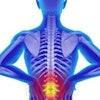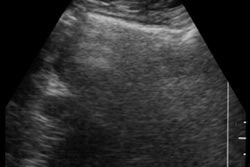Approximately 78% of sonographers in Australia report musculoskeletal injuries (MSI) as a result of their employment, according to the results of a survey conducted by Val Gregory of the Royal Prince Alfred Hospital in Sydney. Gregory said she sees MSI as a serious health problem for the profession, and she believes that its incidence is increasing.
"There are a number of sonographers who have had to seek alternative employment, as they can no longer perform ultrasound. Others have had to reduce their hours of work or change work practices to continue to work," she wrote in Sound Effects, the quarterly bulletin of the Australian Sonographers Association.
Of the Australian sonographers surveyed, the incidence of musculoskeletal pain and discomfort experienced by sonographers since starting scanning was 95.4%. More than 94% of the sonographers describe their state of health as good or excellent, with 67% describing their fitness level as good or excellent. Of that group, 54% exercised three or more times per week (Sound Effects, Dec.1999, Vol.43).
These musculoskeletal disorders are also described by the terms repetitive strain injury (RSI), repetitive motion disorder (RMD), carpal tunnel syndrome (CTS), cumulative trauma disorder (CTD), and occupational overuse syndrome (OOS).
The average number of days spent scanning was 17.2 per month. The average time spent scanning was 6.8 hours per day. Some 42% of the group reported that they had, at the most, one break of more than 10 minutes per day, and 50% had two or three breaks. More than 50% worked continuously for three or more hours between breaks.
Symptoms and processes
Many sonographers experienced pain and discomfort in more than one area, with 91% reporting shoulder pain, neck 84%, upper back 73%, wrist 61%, lower back 61%, eyes 59%, hands and fingers 56%, upper arm 53%, middle back 43%, and forearm 41%. Hip and leg pain was also reported.
The classification of these symptoms include:
- Nerve entrapment syndromes -- cubital, radial, and carpal tunnel syndromes,
- Tendon-related disorders -- tendinitis, tenosynovitis, De Quervain’s syndrome, ganglion cyst formation
- Muscular disorders -- fibromyositis, tension neck syndrome
- Neurovascular disorders -- thoracic outlet syndrome
- Joint capsular disorders -- bursitis, osteoarthritis, synovitis
Most sonographers suffer a combination of these symptoms. The injuries are caused or aggravated by the repetitive movement, forceful exertions, and unnatural posture adopted by sonographers during their jobs.
There are two main processes that cause MSI in sonographers:
- Overuse or strain of the muscles may cause microtears at the tendon insertions, resulting in ischemia and soft-tissue breakdown. If the microtears continue, further abrasions and tears occur. An acute injury may result in a tear at an already-damaged tendon insertion.
- Venous returns also can be obstructed, causing enlargement of tendon sheaths that results in scarring and compression of the nerves. Demyelination, slowing of nerve conduction, and loss of function occur with prolonged nerve compression.
The pain and discomfort occurred mainly at the end of the working day and after work. The mean average time that sonographers had suffered pain and discomfort was 52 months.
‘Key to a long, pain-free career’
"To the independent observer, it would appear that sonographers have a less than physically demanding job. It may appear to some that sonographers just sit on a chair all day waving a light instrument over the patient's body. However, nothing could be further from the truth. Sonographers who have been in the industry for a number of years will be well aware that scanning can be physically demanding and lead to a number of work-related injuries," said Geoffrey Stieler in the Australasian Society for Ultrasound in Medicine Bulletin.
According to Gregory, the main factors that contribute to MSI in Australian sonographers are:
- Poor equipment design: keyboard/screen height and position, equipment maneuverability, poor transducer grip, ill-adjusted or non-adjustable chairs and examination couches.
- Poor posture due to the type of work performed, especially with the shoulder in sustained abduction and the spine in an unnatural alignment.
- Sustained pressure and force often used to optimize imaging.
- Repetitive movements, particularly when performing sessions of similar examinations.
- Awkward scanning techniques, especially when performing endocavity, cardiac, musculoskeletal, and vascular examinations.
- Assisting with patient movement.
- Body habits and gender -- surveys have reported that taller, heavier sonographers and males have fewer incidences of MSI.
- Inadequate work breaks, with insufficient recovery time.
Stieler’s analysis concurs with Gregory's survey results. "Injuries are or will be a significant concern for the sonographer. Good work-place practices and after-hours physical therapy (some departments routinely perform this therapy during work hours) will be the key to a long, pain-free career in sonography. Selection of ultrasound machines, chairs, and beds are also of great importance. It is hoped ultrasound machine manufacturers can improve the ergonomics of their product, and it is particularly hoped that an arm support for the scanning arm can be developed."
Sonographers, and sonography site managers who are interested in an example of physical therapy intended to keep shoulders in good condition can visit a site sponsored by the Society of Diagnostic Medical Sonographers for a set of exercises designed by Sarah Jackins, a physical therapist from the University of Washington and its exercise training center.
By Jonathan S. BatchelorAuntMinnie.com staff writer
September 15, 2000
Related Reading
Employers can reduce repetitive strain injuries among sonographers, August 17, 2000
Let AuntMinnie.com know what you think about this story.
Copyright © 2000 AuntMinnie.com



















